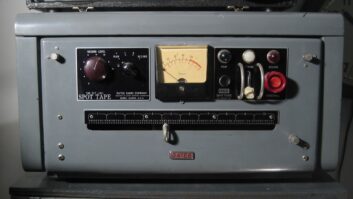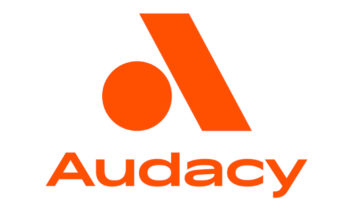D&M Professional has unveiled the PMD620 SD (Secure Digital) field recorder as the follow-up to the PMD660.
Brian Gorman, brand manager for Marantz products, provided a sneak preview on the eve of the its first public showing at the 2007 Podcast and New Media Expo in Ontario, Calif. A hands-on review will follow as production units become available. In the meantime, here’s a “first look” at a worthy contender in the burgeoning ultra-portable field recorder category.
(click thumbnail)No replacement
First, it’s important to note that the PMD620 does not replace the PMD660. The PMD660 achieved instant-classic status when it appeared at the NAB Show more than two years ago, and enjoys ongoing popularity in an arena driven by novelty.
What the new unit offers is a smaller, more economical option to the lineup that should fit the bill for many sound-gathering applications. Some may keep it handy as their personal recorder, or it may be a nice addition to a news operation’s fleet.
According to Gorman, the PMD620 was developed in response to the flood of new solid-state mini-recorders that have been popping up on the prosumer and musician market. Gorman claims credit, along with his colleagues, for spec-ing out the new model and making sure it’s up to snuff for the pro market.
The result is a cigarette-pack sized unit that records to SD memory cards. It incorporates an omni stereo mic with a selectable –10 and –20 dB pad suited to gathering sound at conferences, interviews and the like. Headphones and an external mic use 1/8-inch connectors. PMD620 also incorporates a built-in speaker and runs on dual AA batteries.
Like the PMD660, the PMD620 records in uncompressed WAV format as well as in a range of MP3 compression. The SD card maximum capacity of 2 GB is sufficient to yield up to 90 minutes of stereo recording time at the highest-quality 24-bit, 48 kHz uncompressed WAV setting. Using the maximum compression at the 64 kbps MP3 setting in mono gives a maximum of 70 hours recording. An AC adapter is included for extended, uninterrupted recording or playback sessions.
Enter OLEDs
Battery life is reported to be up to five hours. The longevity is due, in part, to the next-generation OLED (Organic Light Emitting Diode) display. OLEDs use less power than traditional displays and do not require backlighting. Information stands in sharp contrast with white letters on a dark background.
Another advantage for the new display technology is flexibility. OLEDs can be configured to show information in wider variety of ways. Older technologies require that characters be etched in, limiting the number of possible options. What that translates to in the PMD620 is more options to show information the way you want it, such as with larger lettering or metering.
Will radio reporters be willing to trade the PMD660’s XLRs for the PMD620’s portability with a 1/8-inch I/O? For those who grew accustomed to using palm-sized MiniDisc recorders, this may fit the bill.








